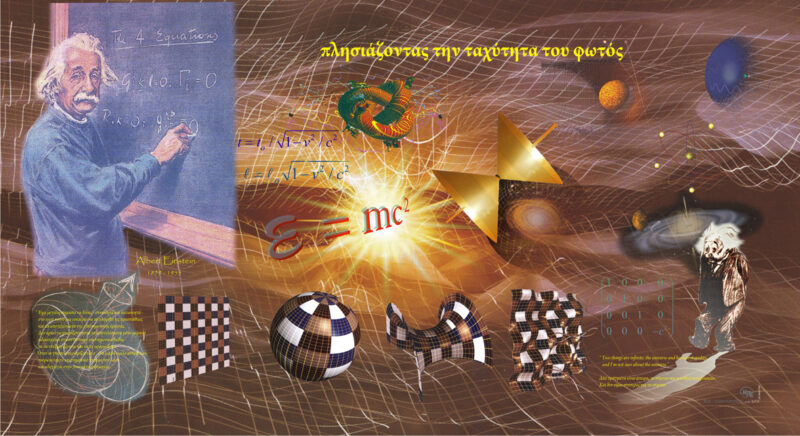Classical Mechanics – Newtonian Mechanics: “How an Apple Changed the World” (20 minutes)

The Foucault pendulum is one of the most impressive experiments in the history of physics, as it provides a tangible demonstration of the Earth’s rotation. The experiment, first conducted by the French physicist Léon Foucault in 1851, does not require complex setups or expensive equipment but is based on simple physical principles that can be observed by everyone.
In 1851, Foucault had the idea to use a pendulum to prove the Earth’s rotation. The pendulum he used consisted of a heavy mass, typically a metal sphere, suspended from a long wire. In his first demonstration, Foucault used a pendulum approximately 67 metres long with a mass of about 28 kilograms, which was installed in the dome of the Panthéon in Paris.
When the pendulum starts to swing, its trajectory initially remains fixed relative to the stars (in an inertial reference frame). However, as the Earth rotates beneath the pendulum, its trajectory appears to shift relative to the ground. In reality, the pendulum maintains the same direction, but the Earth’s rotation causes this apparent change. The Earth’s rotation becomes easily perceptible through the movement of the surface beneath the pendulum (as shown in the image).
Electromagnetism: “Taming the Lightning” (20 minutes)

The chaotic pendulum is an example of a mechanical system that exhibits chaotic behavior under specific conditions. It is characterized by sensitivity to initial conditions, meaning that even small differences in initial conditions can lead to drastically different future behaviors of the system.
The chaotic pendulum system typically consists of a simple pendulum oscillating around a fixed point, with the addition of external forces such as friction or a periodic external force. Instead of following a predictable, periodic trajectory, the chaotic pendulum can exhibit non periodic, complex trajectories that never repeat exactly in the same way (a fundamental observation). This type of behavior is one of the typical examples of what can happen in dynamical systems governed by nonlinear equations of motion. The chaotic pendulum is often used to study the principles of chaos and nonlinear dynamics.
Chaotic oscillatory motions influenced by magnets are an interesting phenomenon frequently studied in physical systems where the motion of an object, such as a pendulum, is affected by magnetic fields. These systems can exhibit extremely complex and unpredictable movements due to the interaction between magnetic forces and restoring forces.
Modern Physics: “From infinity to infinity” (20 minutes)

Postulates of the Special Theory of Relativity – Einstein (1905)
- The laws of nature are the same for all inertial reference frames. Any reference frame moving at a constant velocity relative to an inertial reference frame is also inertial.
- The speed of light is the same in all inertial reference frames.
Special Relativity
Each inertial reference frame follows the same laws of physics, and an observer within it can consider their own frame as “at rest.” Additionally, the speed of light remains constant across all inertial reference frames.
Motion is relative, as it is always defined in relation to a specific reference frame. This means that when an object moves, its position changes relative to something else.
Benham’s Disk Exhibit
The exhibit features Benham’s Disk, also known as “Benham’s Color Top.” This optical toy creates the illusion of colors when spun. It was invented by Charles Benham in 1894 and is used to study human color perception and the functioning of the visual system.

